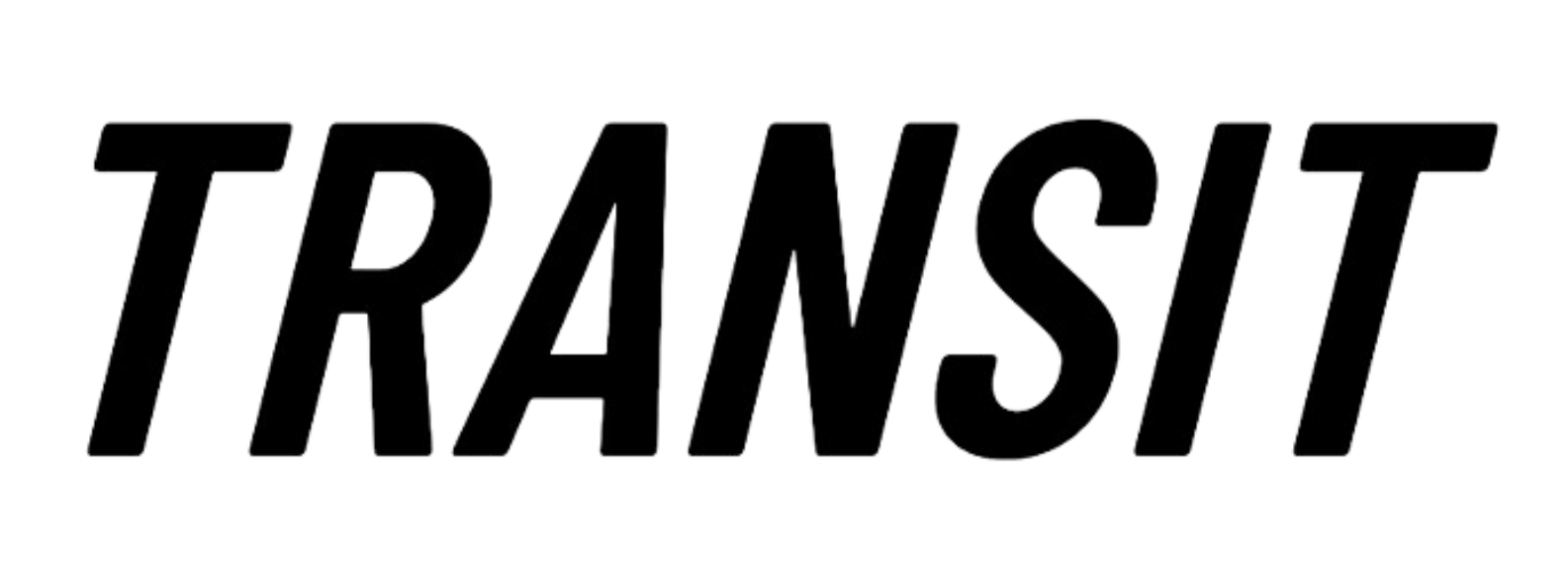November
Hito Steyerl
Abstract:
November is the time after October, a time when revolution seems to be over and peripheral struggles have become particular, localist, and almost impossible to communicate. In November a new reactionary form of terror has taken over which abruptly breaks with the tradition of October.
http://blip.tv/transitjournal/november-by-hito-steyerl-6197871
November Germany 2004. Director: Hito Steyerl. Editor: Stefan Landorf. Assistant: Yasmina Dekkar. DVD. Color. 25 min.
November 16.3.03
Film-treatment by Hito Steyerl, DV, 25min.
My best friend when I was 17, was a girl called Andrea Wolf. She died 4 years ago, when she was shot as a Kurdish terrorist.

Andrea Wolf, age 18
These are stills from my first film. I shot this Super-8 film with a group of people, including Andrea, when I was 17 years old. It was a feminist Kung-Fu film, and she was its undisputed and glamorous hero. At first glance, it is quite hard to see how this cheerful and tacky footage could relate to issues such as terrorism, globalisation, colonialism, and warfare.

Andrea, a third girl and me are beating up innocent males.
It is impossible to reconstruct the story of the film. The film has no sound because the only films we could steal were silent S-8 cassettes. Only the fighting scenes were shot, and these consist of showing a gang of three girls including myself clumsily trying to beat up every male they can get hold of.

Screenshots from the untitled film

me

Andrea
Now this amateur fiction film suddenly turned into a document, when in 1998 Andrea Wolf was killed, most probably by members of the Turkish army in a battle near the small border town of Catak in Kurdistan.
There was a warrant out for her in Germany, as she was accused of having participated in terrorist activities, more precisely the complete destruction of the deportation prison in Weiterstadt by a huge detonation. She was suspected of having assisted the Red Army Fraction in carrying out the attack.

Destroyed prison in Weiterstadt, 1993.
At this point, in 1996, she chose to go to Kurdistan in order to join the womens’ army of the so-called PKK. She took on the name “Ronahi,” trained, and lived with the womens’ army for quite a while, mostly in camps in Northern Iraq.
In October 1998, her unit was tracked by the Turkish army close to the Iraqi border. A heavy firefight took place. Only a few of the units members remained alive. They were under heavy fire by Army helicopters. Most of the survivors took refuge in what is being described as an earth hole. As surviving earwitnesses say, she was shot by either army members or Kurdish village keepers after having been dragged out of the hole and taken prisoner. Her case is only one of the many extra-judicial executions which characterise this dirty and almost forgotten war of the 90s.
Andrea’s death

There are strange coincidences in the material we shot almost 15 years earlier, back in Bavaria, where we grew up. In the film, we are constantly fighting – probably for justice – and the ethic code of the film is that only villains use weapons and the good guys and girls use their bare hands for fighting. Only in the film it is myself who gets shot and Andrea who survives, taking up the weapon, executing the villain, and riding into the sunset on a motorbike.


Andrea avenges my death and shoots the villain


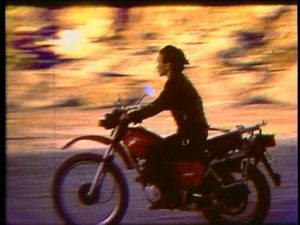
Then she drives off into the sunset.
Her body never came back. What came back instead was this poster.

The text reads: Martyr Ronahi, taken prisoner by Turkish security forces as a fighter in the Free Womens Army Kurdistan and murdered. The fallen revolutionaries are immortal.
I found this poster in a cinema hanging next to the posters of sex films just like another pin-up.
As a revolutionary means, pin-ups are nothing new. Technically reproduced pictures travel around the world and spread heroic postures.
Postures and gestures
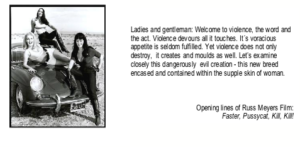
 When we were shooting our S-8 film, women had to look good and shut up. Female role models were rare. We picked them up at the movies, for example in this incredibly tacky film by Russ Meyer, called Faster, Pussycat, Kill, Kill! It deals with a bunch of large-breasted women terrorizing males. We copied these postures, creating pin-ups which hovered between pornography and severe dilettantism.
When we were shooting our S-8 film, women had to look good and shut up. Female role models were rare. We picked them up at the movies, for example in this incredibly tacky film by Russ Meyer, called Faster, Pussycat, Kill, Kill! It deals with a bunch of large-breasted women terrorizing males. We copied these postures, creating pin-ups which hovered between pornography and severe dilettantism.

Russ Meyer: Faster,Pussycat, Kill,Kill!

The picture of the woman with the gun first referred to a game, which also contained elements of seduction and submission. But as time passed, it also acquired a more real and at the same time unusual aspect. This is Andrea in Kurdistan.

“I participated in the revolutionary left in Germany, and together with other comrades we investigated those processes around the world that we could take part in to learn something. Other comrades are here already, we are taking part in political education and training. We want to understand the principles of the party and want to found it in our own country under the conditions that exist there.”
I received a tape of this film made after Andrea’s death by a Kurdish satellite TV station. When asking a friend to translate the Turkish text for me, he starting laughing when he saw its director and said, “But I know the director.” He lives around the corner. This was when I realized that more of the people who have fought with Andrea live in my neigborhood in Berlin than in Kurdistan. And this was also when I realized that “Kurdistan“ was not only “there,” but also “here.”
An interview with a former fighter.
 The whole warzone of North Kurdistan is a white spot on the map. The war took place in a vacuum. There are no witnesses. And in this situation everything is possible. Everything which hurts your soul, everything is possible, all the bad things you could imagine are possible, and they all happened there, too. I could smell the smell of war in all it´s facets right from the start. It was absolutely mandatory to carry weapons at that time. It was emotionally repulsive for me to carry weapons, because it was clear that these are not accessories like a filmcamera, but weapons have an extremely precise purpose.
The whole warzone of North Kurdistan is a white spot on the map. The war took place in a vacuum. There are no witnesses. And in this situation everything is possible. Everything which hurts your soul, everything is possible, all the bad things you could imagine are possible, and they all happened there, too. I could smell the smell of war in all it´s facets right from the start. It was absolutely mandatory to carry weapons at that time. It was emotionally repulsive for me to carry weapons, because it was clear that these are not accessories like a filmcamera, but weapons have an extremely precise purpose.
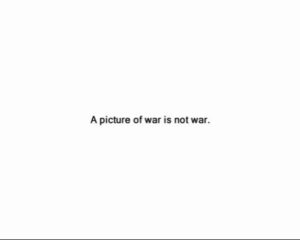
Martial Arts
On the back of a tiger the Bodhidarma rode from India to China. At the end of his trip he reached the Shaolin monastery, where he is said to have laid the foundations of the martial arts.
The lonely, wandering fighter became an icon for the struggle of the oppressed against the privileged.
Later on films take over the duties of the wandering fighter and spread the pictures of the fight without weapons throughout the world. But not only the pictures of fighting heroes travel, but also the practice of martial arts itself. Andrea continued to practice martial arts during her time in Kurdistan, where she taught them to the women fighters.
The martial arts are carried around the world by wandering fighters, by occupation as well as liberation armies; by itinerant monks, military instructors, members of obscure secret societies, freedom fighters and even situationist filmmakers.
 In fact these arts had come to India from the West, with the invasion of Alexander the Great’s armies. So martial arts keep travelling forward between East and West, or so to speak, between Eastern and Western. They can be understood as symptom of expansion and militarization and have moved along with these activities from the start. Of course martial arts also have been spread massively with global militarization in recent times, with the spread of these arts throughout the worlds armies, above all the American army after WWII. So not only the pictures of fighting heroes traveled by means of their mechanical reproduction, but also the practice of martial arts itself, in the case of Andrea until her life ended on a spot which lies right on the old silk road, the traditional link of Asia and Europe.
In fact these arts had come to India from the West, with the invasion of Alexander the Great’s armies. So martial arts keep travelling forward between East and West, or so to speak, between Eastern and Western. They can be understood as symptom of expansion and militarization and have moved along with these activities from the start. Of course martial arts also have been spread massively with global militarization in recent times, with the spread of these arts throughout the worlds armies, above all the American army after WWII. So not only the pictures of fighting heroes traveled by means of their mechanical reproduction, but also the practice of martial arts itself, in the case of Andrea until her life ended on a spot which lies right on the old silk road, the traditional link of Asia and Europe.
On the other hand, Andrea became herself an unfamiliar kind of icon, a traveling image, when she was proclaimed a martyr for the Kurdish cause. Now, not only in Kurdistan women are bearing her picture next to Abdullah Ocalan’s, but I have also seen my friend’s picture at demonstrations here, as part of a gloriole of martyrs, part of them suicide fighters, surrounding the patriarchal figure of Abdullah Ocalan.
Traveling images
First we picked up and processed traveling images, global icons of resistance in order to become in Andrea’s case herself this kind of traveling icon. But at the moment it seems impossible to universalize this kind of icon as in the times of leftwing internationalism, when the icons of Che and other internationalists occupied the fantasies of metropolitan youth.

But we are no longer in the period of the October described by Eisenstein, where the Kosaks decide to join the Russian proletarians in internationalist brotherhood during the Bolshevik revolution.

Instead, we are in the period of November, when revolution seems to be over, and peripheral struggles have become particular, localist, and almost impossible to communicate. In November, the former heroes become madmen and die in extralegal executions somewhere on a dirty roadside and information about it is so diffused with predictable propaganda, that hardly anyone takes a closer look.
Andrea’s death was known to us in early November.


November
November is the time after October, a time when revolution seems to be over, and peripheral struggles have become particular, localist and almost impossible to communicate. In November a new reactionary form of terror has taken over, which abruptly breaks with the tradition of October.
1,18 million rounds of ammunition DM 10; 118,000 rounds of explosive ammunition DM31; 187 MTW-tanks M113; 85 Leopard 1A1 Tanks, 39 wreckers, M88; 10 folding bridges, 5 reconaissance planes, 600 rubber dinghies 100,000 bazookas.
After the fall of the Berlin wall, the weapons of the former National People’s army of the GDR are given to the Turkish army.
The old weapons of the National peoples army were given to the Turkish government, and they were directly deployed against the Kurdish civilian population.
When i came to Botan I had the opportunity to examine destroyed military barracks. The first thing we found there were boxes with landmines originating from the GDR. The village protectors were often equipped with German Kalaschnikoffs. The tanks one could frequently observe through magnifiying glasses were often German BAT tanks. This was for me an unequivocal sign of partisanship with the Turkish government. I have always had a large number of Kurdish friends, and of course I had a relation to this conflict.
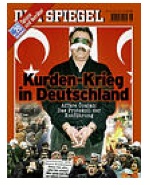 But Kurdish reality is on many levels created and lived out here. On one level Andrea took up her fighting name, Ronahi, from a Kurdish girl who died after setting herself on fire in Mannheim in 1994 as a protest against restrictions imposed against the PKK in Germany. But there is not only the history of the activities of Kurds and also Turks in Germany, but also the history of circulation of weapons of mass destruction from Germany into Iraq.
But Kurdish reality is on many levels created and lived out here. On one level Andrea took up her fighting name, Ronahi, from a Kurdish girl who died after setting herself on fire in Mannheim in 1994 as a protest against restrictions imposed against the PKK in Germany. But there is not only the history of the activities of Kurds and also Turks in Germany, but also the history of circulation of weapons of mass destruction from Germany into Iraq.
The chemical weapons used against the Kurds were supplied by a German company under the leadership of a company called Karl Kolb. More than 5,000 people died when gas was used against the village of Halabja in 1987.

This military action was part of a larger scheme called Anfal, which led to the death of 182,000 people mainly in Northern Irak. Additionally large parts of the former GDR army’s weapons were given away to Turkey after German reunification in order to deal with the Kurdish insurrection. This area has also several historical ties to German influence. It refers to a long history of German involvement in Turkey and Iraq, starting with the construction of the so-called Bagdad train line, from Berlin to Bagdad in the beginning of 20th century. This zone represents an unclear territory, a zone of militarization of the mind, a space which is not only characterised by the superimposition of terrorism and migration, but which is also heavily gendered in gender-specific warfare and even more importantly by massive practices of state repression und violence against women, for example organized rape.
Between two deaths
 Bruce Lee’s last film was released 5 years after his death. He plays a movie star who has staged his own shooting in front of a running camera in order to be declared dead and to go underground. Those scenes are fictional. But the scenes used for Billy Lo´s fake funeral are documentary scenes of Bruce Lee’s real funeral. Since then many people think Lee’s death was staged, and that he is still alive and merely waiting for the right time to return to society.
Bruce Lee’s last film was released 5 years after his death. He plays a movie star who has staged his own shooting in front of a running camera in order to be declared dead and to go underground. Those scenes are fictional. But the scenes used for Billy Lo´s fake funeral are documentary scenes of Bruce Lee’s real funeral. Since then many people think Lee’s death was staged, and that he is still alive and merely waiting for the right time to return to society.
In Andrea’s case this fantasy is not a Hong Kong martial arts film plot, but the official state position.
Both the Turkish government and the German authorities entertain the fiction that Andrea is still alive and that her whereabouts are unknown. In this official state fiction Andrea might have staged her death just like Bruce Lee. According to the German state, Andrea lives on, and maybe she will never die.
 In the mythology of martial arts it is said that the Bodhidharma, who had been murdered by a jealous monk in China, was seen a few years after his death wandering the mountains of Central Asia. When the monks opened his grave back in China they found only one sandal. This is why the Bodhidharma is usually portrayed as a wanderer with only one sandal.
In the mythology of martial arts it is said that the Bodhidharma, who had been murdered by a jealous monk in China, was seen a few years after his death wandering the mountains of Central Asia. When the monks opened his grave back in China they found only one sandal. This is why the Bodhidharma is usually portrayed as a wanderer with only one sandal.
In Andrea’s case it is not necessary to open the grave, only to find a few bones but no explanation. The sandal in her case are her images, which continue to travel after her death and which construct an ambivalent space where the “here” and the “there” merge in an uncomfortable imbalance.





